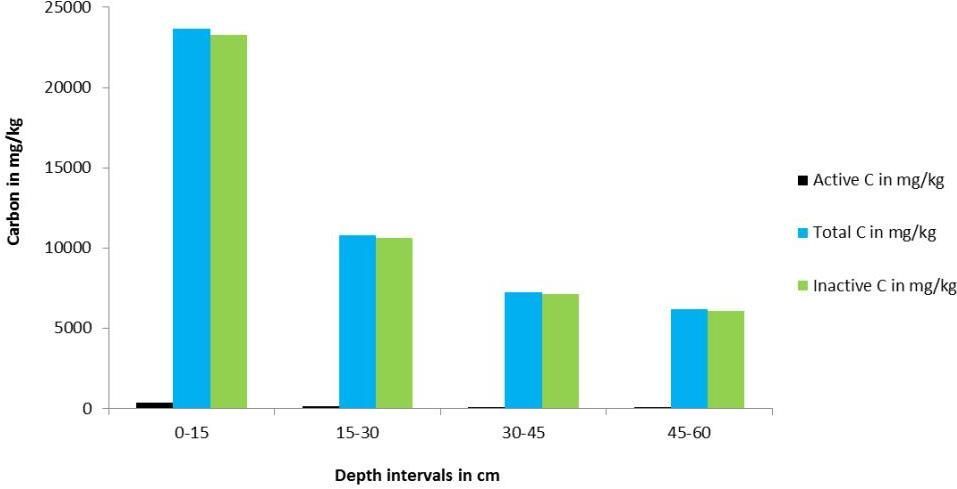It is important that any soil builds and store carbon throughout the profile, not only for reasons related to carbon sequestration, but also for the purpose of providing the soil with a cementing agent and keeping the soil aggregates stable and intact. A soil can build up a carbon sink (regardless of the texture) if the correct management practices on that soil are applied. Soil organisms require this carbon in order to survive in the environment. Soil microorganisms like bacteria and nematodes require a C: N ratio of 8:1 in order to satisfy their nutritional requirements1. This means that for their diet to be met, a single microbe will need 8 carbons and 1 nitrogen, if this diet is not satisfied (shortage of organic carbon and organic nitrogen found in residues which have nitrogen and carbon in them like protein and carbohydrates), the microbes will start feeding on the inorganic nitrogen and carbon sources thus consuming the plants available nitrogen. This process, when it occurs in the soil, is referred to as immobilisation. When that pool of nitrogen and carbon is depleted, the microbes remain dormant due to starvation2. Microbes feed on the organic pool, and excrete the feed as an inorganic compound. For example, a microbe will take up protein-Nitrogen and excrete it as Ammonium/Nitrate-N which is then consumed by the plant.
The carbon in the soil is stored in an organic (or passive) form and an active form. The difference between the two is that the active carbon form is readily available as a food source for microbes, whereas the organic form replenishes the active form and is not readily available to all groups of bacteria. As a result, it is important that when doing tests for soil carbon, both of these forms of carbon are measured, in order to get a clear picture of how much food is available in the soil and how much of it is readily available to be utilised by the life occupying the soil.
Below is data obtained from soil core samples that were analysed from a farm in the Tsitsikamma region in the Eastern Cape, South Africa, which shows the level of these two forms of carbon in the soil.
Figure 1: Active and total carbon content at different depths of a soil profile in the Tsitsikamma
The figure above shows just how much the available food source for the soil life can be over or under-estimated, if only one of these carbon forms is measured. The analysis showed that there is a lot of carbon (>20000 mg of C in one kilogram of soil in the top 15 cm), however not all of it is active (<1000mg is active in a kilogram of soil).
The only way to activate the inactive form is by having a greater diversity of organisms that inhabit the soil, such that the soil food web is completely balanced. The balancing of the soil food web will help in accelerating the decomposition process thereby activating the inactive carbon form more effectively at a higher rate, which will result in more nutrients being made available for plants.
References
1. http://www.icrisat.org/what-we-do/learning-opportunities/lsu-pdfs/Carbon%20Nitrogen%20Ratio%20in%20the%20Soil.pdf
2. Hoorman J.J and Islam R.2010. Understanding Soil Microbes and Nutrient Recycling. Fact Sheet, Agriculture and Natural Recourses. Ohio State University Extension. Pp1-5.
- The management of soils with excessive sodium and magnesium levels - 2023-06-12
- Understanding evapotranspiration better - 2021-10-18
- Soil fungi connections - 2021-09-28

